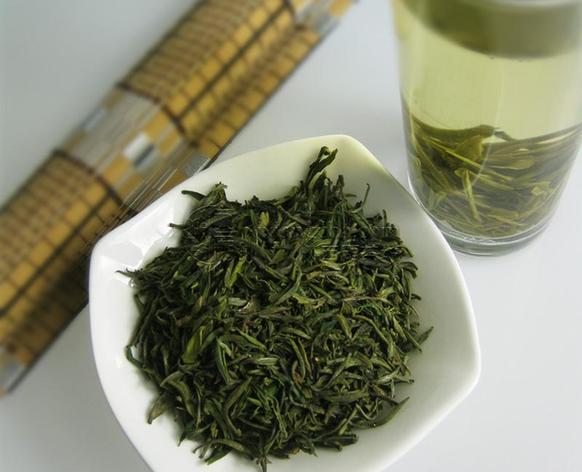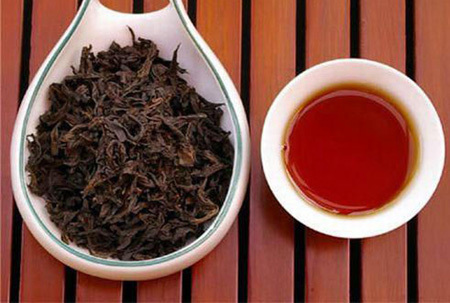- By Wang Yanfang
 0 Comment(s)China.org.cn, July 5, 2011
0 Comment(s)China.org.cn, July 5, 2011
Of the big three beverages: Tea, coffee and cocoa – tea is consumed by the largest number of people in China.
China is considered the home of tea. Chinese tea had begun to be exported to Japan and Korea before the Tang Dynasty (618-907). In the early period of the 17th century, Chinese tea was exported to Europe.
The tea from China is in great abundance and variety. To tell if a pot of tea is nice you can mainly rely on the color, smell, taste and form. According to these principles China.org.cn selects 10 of the most excellent from the whole of the country.
 |
| Fujian Tieguanyin [996118.com] |
The tea was originally made in the Anxi County, Fujian Province in the 18th century. With precision, it is rolled into tightly knit granulated green balls with red spots and white frost. It has a unique taste with an orchid fragrance.
The legend behind the tea goes like this: A sincere Buddhist praying to the Goddess of Mercy daily. One night, he dreamed of a magic plant, which he discovered the next day. The tree sent out unique fragrance. Buddhists believed it was a gift from the Goddess of Mercy and called it Tieguanyin tea.
 |
| Lushan Yunwu [lxbcy.com] |
Lushan refers to Mount Lu and Yunwu means cloud and mist. Mount Lu's foggy conditions make for a natural shade where the tea plants grow. Long ago, Lushan Yunwu was offered to emperors as a gift because of its unique, gentle and lasting sweetness and it is said that drinking Lushan Yunwu tea prolongs life.
| Yunnan Pu-erh [worldkitecapital.com] |
Yunnan Pu-erh tea is compressed into various shapes and is black or brown-red in color. It tastes mellow and is purported to reduce blood cholesterol. It is reputed to be the beauty tea and slim tea. It can generally improve in taste over time.
| Keemun Black Tea [cntcw.cn] |
The aroma of Keemun tea is fruity, which creates a very distinctive and balanced taste. Steeping in boiling water for about five minutes allows the mellow Keemun Tea with a delicate perfume and flavor to fully brew. Keemun can enhance one's alertness and memory. It is excellent after a meal.
| Da Hong Pao [pinpaitea.com] |
Yancha tea features the fresh fragrance of green tea and the mellow sweetness of black tea. With its lovely flowery aromas and health benefits, it was offered to emperors as a gift more than 1,000 years ago. It was enjoyed by Europeans when it was introduced to Europe in the 18th century. Da Hong Pao is one of the best Wuyi Yancha oolong teas.
 |
| Xinyang Maojian [uchaa.com] |
It is treasured for its refreshing taste and pleasant aroma. In its legend, nine fairies of the heaven brought the tea down to the human race on the earth. When drinking the tea, you will see the image of nine dancing fairies in the vapor.
| Lu'an Guapian [pinpaitea.com] |
The first documentary evidence of Lu'an Guapian dates back to Tang Dynasty (618-907) and it was designated as the tribute in Qing Dynasty (1636-1911). With a bright color, Lu'an Guapian has a particularly smooth taste and sweet aroma. It uses the second leaf on the plant, not the new buds as most green teas do.
 |
| Huangshan Maofeng [1beicha.com] |
Its English translation is Yellow Mountain Fur Peak, due to the small white hairs covering the leaves which resemble the peak of mountain. It's best harvested in the early spring. Through special processing technique, the tea is jade-green in color and has complex and refreshing aroma with a lingering aftertaste of floral sweetness.
| Dongting Biluochun [k6768.com] |
It is said that Dongting Biluochun tea plant was first found by a nun when she went for an outing in the spring. With a history of over 1,000 years, it was offered to emperors as the tribute during the Qing Dynasty (1636-1911).
 West Lake Dragon Well Tea (西湖龙井)
West Lake Dragon Well Tea (西湖龙井)| West Lake Dragon Well Tea [51hecha.com] |
The tea has a recorded history of over 1,000 years, and was mentioned in the oldest tea book of the Tang Dynasty (618-907). The tea is frequently offered to visiting heads of state, including the British Queen Elizabeth II and former US President Richard Nixon.

















No comments:
Post a Comment